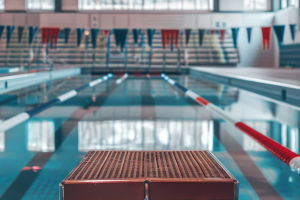Heatstroke is a serious condition that often strikes during periods of high temperatures and humidity.
Our Lykkers need to be aware of how to recognize, prevent, and respond to this health risk effectively.
What Is Heatstroke?
Definition
Heatstroke, also known as hyperthermia, happens when the body is exposed to prolonged heat and humidity, leading to a dangerous rise in internal temperature.
This occurs because the body absorbs more heat than it can release, especially when sweat cannot evaporate properly due to high moisture in the air.
Heatstroke vs. Sunstroke
Heatstroke is often confused with sunstroke, but the two differ. Sunstroke results from direct and extended exposure to sunlight, especially affecting the head, causing rapid body temperature increase along with skin redness and eye irritation. Heatstroke, however, can happen even without direct sunlight exposure, triggered by warm and humid environments.
Causes of Heatstroke
Environmental Factors
The primary contributors include elevated temperatures, high humidity, and poor airflow. These factors combined create conditions where the body struggles to cool itself effectively.
Risk Groups
Those at greater risk include young children, older adults, individuals experiencing dehydration, and those with heart conditions or who undergo intense physical effort during hot weather.
Recognizing Heatstroke Symptoms
Common Signs
- Nausea
- Headaches
- Elevated body temperature
- Muscle cramps
- Fainting spells
- In severe cases, confusion or loss of consciousness
Additional Signs with Direct Sun Exposure
Skin redness, blisters, and eye discomfort may also occur if the condition is caused by prolonged sunlight exposure.
Duration and Recovery
Varies by Individual
Recovery time depends on severity and the person’s health status. For some, symptoms may last a day or two, while in vulnerable groups such as the elderly or infants, even mild heatstroke can be serious and last longer.
Typical Recovery
Generally, most recover fully within 24 to 48 hours without lasting effects, provided timely care is given.
Steps to Take When Heatstroke Occurs
Immediate Actions
Move the person to a shaded, well-ventilated area. If they feel faint, lay them down with legs elevated. Offer cool water in small sips.
When to Seek Medical Help
If symptoms do not improve within 30 minutes or if the person shows confusion, loss of consciousness, or severe symptoms, urgent professional assistance is necessary.
What to Avoid During Heatstroke
No Diuretics or Stimulants
Avoid drinks with caffeine or substances that increase emiction output, as these worsen dehydration.
Avoid Harsh Cooling Methods
Do not apply alcohol-based rubs or rapid cold baths, as they can cause shock or skin damage.
No Over-the-Counter Fever Medication Without Advice
Medications used to reduce fever in other conditions do not help in heatstroke and might harm organs like the liver and kidneys if taken unnecessarily.
Preventing Heatstroke
Limit Exposure
Avoid outdoor activities during peak heat hours, usually between late morning and mid-afternoon.
Maintain Ventilation
Ensure indoor spaces are well-ventilated with fans or air conditioning set at a comfortable temperature around 23-24°C. Avoid frequent movement between hot and cold environments to prevent stress on the body.
Wear Appropriate Clothing
Choose lightweight, breathable fabrics such as cotton or linen, and opt for light colors that reflect heat.
Sun Protection
Gradually increase time spent in sunlight, always use high-protection sunscreen, and stay in shaded areas when possible.
Hydration and Diet
Drink plenty of fluids, including mineral-rich beverages if necessary. Emphasize a diet abundant in fresh fruits and vegetables to support overall health and hydration.
Heatstroke in Young Children
Increased Vulnerability
Children under two years are particularly susceptible due to their immature temperature regulation systems.
Signs to Watch For
- Rising temperature above 40°C
- Vomiting and nausea
- Dry or excessively sweaty skin
- Rapid breathing
- Restlessness and irritability
- Muscle weakness and cramps
- Possible seizures or fainting
Emergency Response
If these symptoms appear, immediately move the child to a cool, shaded, and airy place. Lay the child down with legs elevated and cool the body using damp cloths or cool water wraps. Offer water in small amounts if the child is conscious.
When to Call for Help?
If there is no improvement or if seizures, loss of consciousness, or confusion occur, seek emergency medical services without delay.
Summary
Heatstroke is a critical condition that arises from excessive heat and humidity exposure. Recognizing symptoms early, responding properly, and adopting preventive measures can reduce risks significantly. Vulnerable individuals, including young children and older adults, require special attention during hot periods. Following guidelines from medical experts ensures a safer and more comfortable experience during warmer seasons.
By understanding the causes and taking responsible steps, everyone can protect themselves and others from the dangers of heatstroke.


